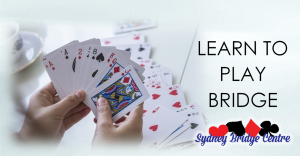City and Canada Bay – Thursday Morning 24th April 2025.

Board 19 last week was a typical part-score hand where both sides could make a low level contract. However, as we’ll see, it’s harder for North South to find theirs – unless they get into the auction first.
It also contained some interesting bidding and defensive possibilities.
South and West will surely pass but North is close to an opening bid. Even though it’s only a balanced 11 point hand, I would definitely open it. Firstly it has both majors so it gives partner a chance to respond a major and find a fit there. Secondly, you are in 3rd seat. East could easily have a reasonable hand as there have already been two passes to you and you only have 11 points. So it could easily be East West’s hand – but it makes it much harder for them to bid if they start as the overcalling side.
But let’s assume for the moment that North passes. He may have just lost his side’s only chance to get into the auction! East has an easy 1♦ opening bid. South can’t bid over that, West will respond 1♥. It’s now not that attractive for North to bid either. Double (takeout showing both black suits) is the only thing he might consider but that’s only going to work if partner happens to have spades – if partner bids clubs his side could be in a mess. East rebids 2♣, West now gives preference to 2♦ (or possibly take a rosier view of the shape of his hand and bids 3♦). A 2♦ bid is just simple preference between diamonds and clubs and doesn’t guarantee a diamond fit – hence North South have no reason to wade in when it could be a hand where neither side has a fit.
Contrast this with what happens if North opens 1♣. East will overcall 1♦ but now South, knowing his partner has opened the bidding, can bid 1♠ (note that in this sequence you can pretty much ignore the 1♦ overcall and just bid what you would have responded normally – see advanced section for more on this). Although West will clearly raise diamonds, North can now show spade support. Depending on what methods both sides play, West and North may be able to show the nature of their support quite accurately – see advanced section for more on this. Once North South have found their spade fit there’s a chance they will be allowed to play 2♠ and, even if East West push onto 3♦, they may compete to 3♠ which should go 1 off for a score of -50, better than the -110 they would have scored for 3♦ making. Some were allowed to make 3♠ for an excellent score of +140.
What about the play? In diamonds, the defence will surely start with 3 rounds of spades. Declarer should next run ♥Q. Although that loses, it now gives him an entry to dummy to take the trump finesse. Mind you, on winning ♥K, North may well switch to a trump anyway to try and stop club ruffs in dummy (it’s certainly what I’d do). But with trumps 2-2 that means declarer will make 9 tricks quite easily (4 diamonds, 2 hearts, ♣A and 2 club ruffs in dummy). Had trumps been 3-1 (so he may not be able to score 2 club ruffs), he could also take the club finesse with a high degree of confidence – see advanced section for why.
If South is playing in spades, the defence can take 5 tricks after ♣10 lead (♣AQ and a club ruff plus the two red aces). West will surely lead his singleton club to try for the ruff (leading shortages from a weak hand is particularly appealing because the weaker your hand, the stronger partner’s is likely to be – hence it’s more likely he will have the entry you need to get in to give you your ruff). But declarer might be able to try something to deflect the defence from finding it. Can you see what it is (hint – read last week’s column)? See advanced section for the answer. If the defence don’t take the club ruff, declarer can now make 9 tricks (4 trumps, both red kings and 3 clubs – once West’s singleton ♣10 appears, declarer just needs to knock out the ♣AQ).
Key points to note
Getting into the bidding first has many advantages. Particularly after two passes when it’s very likely to be the opponents’ hand. It’s a lot easier to find your own fit if you start the auction.
After 1♣ (1♦) you can use double to show exactly 44 in the majors, besides that you can just bid as if the 1♦ bid hadn’t happened.
A “mixed raise” is a hand that’s got good support for partner and falls somewhere between a pre-emptive raise and a genuine invitation to game. Some pairs reserve a specific bid to show this type of hand.
Leading a shortage to try for a ruff is appealing from a weak hand – it increases the chances partner has entries to be able to give you one or more ruffs.
Be aware of the possibility of playing a false card as declarer – it may deflect the defenders from finding a ruff.
More advanced
After partner opens 1♣ and your right hand opponent overcalls 1♦ the next hand can basically bid just as it would have responded without the overcall. Some players believe that a 1 major bid here should show 5 but there’s no need. The only additional bid responder has available is double – that is best used to show exactly 44 in the majors. Note this sequence is different to a 1 minor opening and a 1♥ overcall. There it’s common to use double to show exactly 4 spades and 1♠ to show at least 5. But after a 1♦ overcall both majors are still potentially in play so you need to be able to bid either or both (imagine a hand that was 24 in the majors – you want to be able to bid your major in the same way you would have responded in it had there been no intervening bid – and it’s no good doubling with that shape as partner might bid your doubleton).
After 1♣ 1♦ 1♠ West will clearly wish to support diamonds. But his hand is a bit in-between. He’s too good for a simple raise to 2♦ (which would be done on a hand with less shape and 3 card support), he’s not strong enough for an invitational raise to game, but his hand is a bit too good for a pre-emptive raise. Yes he only has 5 points but they are part of a good heart suit (which a pre-emptive raise in diamonds will surely mean gets lost); he also has good shape with a shortage and a known 9 card diamond fit. He has what is sometimes referred to as a “mixed raise”. Some pairs allocate a specific bid for this sort of hand – often a jump cue bid of the opponent’s suit (so 3♣ in this case). It can help partner better judge what to do later in the auction.
Another bid West could consider on this hand after 1♣ 1♦ 1♠ is 2♥. Logically this has to imply some diamond support. Why? Because West is already a passed hand so he can’t have a strong hand with hearts that 2♥ would normally show. He’s unlikely to have a 6 card heart suit (he would probably have already opened a weak two with that). But it would not be safe to introduce a 5 card heart suit with a weak hand when partner might not have any hearts at all and North could have a strong hand sitting over him. Hence the only reason to introduce hearts is to offer an option – i.e. because he ALSO has some diamonds that he’s prepared for East to go back to if he can’t stand hearts.
North may also be able to show his exact type of spade support. If the pair plays “support doubles” (i.e. where a double by opener of any bid by West up to 2 of their major shows 3 card support) then a direct bid of 2♠ by inference shows 4 card support. It can be very useful for South to know if North has 3 or 4 spades – after all he could have 5 himself and then competing further to 3♠ becomes very attractive. On this hand it’s quite attractive anyway even with just a 4-4 fit because of the vulnerability (even 2 off undoubled will score better than 3♦ making).
I said that playing in diamonds, declarer can be very confident the club finesse will work. Why? Count the points and remember the bidding. South passed as dealer. He has almost certainly started the defence with ♠KQ and another. Then the trump finesse has lost to his ♦K. That means he has already shown up with 8 points. If he had ♣K that would give him 11 which, these days, many players would have opened the bidding with.
So what could declarer do when playing in spades and West leads his singleton club? East wins ♣Q and declarer should smoothly play…..♣J! That’s the one card West can’t have when he leads ♣10 and it’s possible from East’s perspective that it could be singleton (i.e. West is leading from ♣109654). East shouldn’t really fall for that because West would surely lead a diamond unless he had a good reason not to. Also the auction is likely to have indicated that West can’t have that many clubs (he might have bid 2♥ himself and raised diamonds – or if East has rebid clubs then West would have raised those had he had length). But it costs declarer nothing to try the deflection!
Julian Foster (many times NSW representative) ♣♦♥♠



